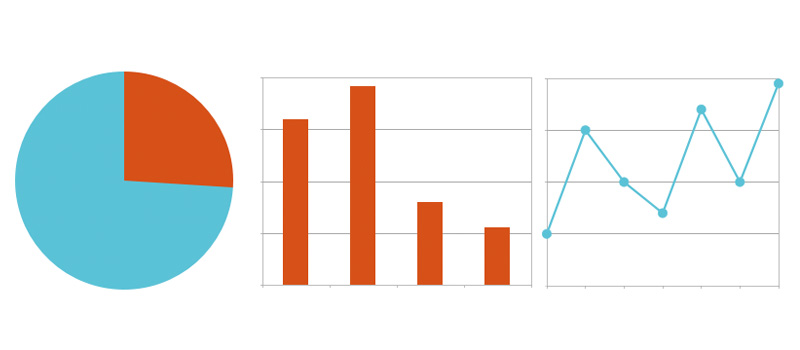Listening As Competitive Advantage: The Role of Customer Surveys
10.04.12 · Sonia Greteman
Speak to the C-Suite in a language it understands: charts and graphs. Data demands context. Provide it if you want to be heard.
Members Spoke, We Listened
Ernest Hemingway said, “Most people never listen.” He would have been right to add that most businesses and organizations don’t either. Successful ones do. They also encourage comments.
As communications committee chair for the Wichita Aero Club, earlier this year I asked other committee members – Nicole Alexander of Hawker Beechcraft, Lisa Conklin of Spirit AeroSystems and Peggy Gross of Bombardier Learjet – if they agreed we should conduct a member survey. All did. Enthusiastically.
Wichita Aero Club Chairman Patrick Tuttle was especially supportive, saying since the club’s relaunch in 2008, it was time for a comprehensive survey. “Ask for feedback in a way that allows for complaints as well as compliments,” he said. “We want more than a rubber-stamp endorsement of the status quo. Let’s really ask, listen and learn.”
If They Knew Then What We Know Now
On a quirky, but relevant, side note – our club originally formed in 1915, sponsored a balloon race, and promptly took a 93-year-long break. Maybe those members were too busy dreaming of flight and developing aircraft to keep the club going. Or maybe they didn’t care for the luncheon speakers. We’ll never know, as no records exist.
The leadership of our reincarnated club has had ongoing discussions about what our role should be in advocating for aviation. How we can continue to advance our mission of encouraging kids to study science, technology, engineering and mathematics (STEM). Whether our annual gala ought to be a black-tie event. Whether membership would support more after-work mix-and-mingle opportunities. Whether we should consider other locations, times, functions and costs. How we can retain and attract more members. Issues every organization faces, others unique to our own.
After months of planning, execution and review, at our last Aero Club board meeting, I presented the survey results. No sugar coating. No glossing over with my interpretation of the high points. I quickly walked the board through each question asked and the responses.
We now have a better understanding of what members think. A good number – roughly 10 percent – of them told us. Equally important, we have a benchmark to measure against as we move forward, tracking members’ sentiment about everything from perceived value to personal relevance.
Aero Club Secretary Jeff Peier, a Wichita aviation attorney, was one of our most vocal survey proponents. “Second-guessing is not an option when negotiating and documenting the terms of a complex transaction,” he said. “For me, the most valuable part of the questionnaire is the quantitative aspect – clear and concise.”
Expedite The Process With Online Tools
For the highest level of serious, qualitative research, turn to the pros. But, if your budget, timeframe or project doesn’t demand that level of sophistication, there are lots of accurate and affordable options out there. The 800-pound gorilla of low-cost, input-aggregation has a playful name – Survey Monkey – but an all-business, efficient format. It’s what we used for the Aero Club survey. There are many others, from Formstack to Zoomerang. Key benefits include:
- Cost effective with no printing or postage
- Fast, with-a-click response
- Real-time, no-waiting information gathering
- Sense of anonymity, no handwriting
- Reliable, automatic compilation
- Easily digestible data, visually presented
- Better organization for clearer outcomes
Design for At-a-Glance Results
While we built in ample open-ended questions, simplify your data analysis by designing the bulk of your survey instrument to have answers ranked with numeric value – 1 to 5. You won’t be faced with pages and pages of qualitative feedback you’re trying to get your arms around. You want a language your CEO understands: charts and graphs. Again, candid narrative provides added insight, so don’t leave it out, but make it the icing. Not the cake.
Strive for Objectivity
Work to keep bias out of the survey structure. Encourage others to read your questions first. Hone and hone some more. You want honest, high-quality feedback provided by as broad-based a sample as possible. Otherwise, why bother?
Incentivize With a Tangible Reward
Let people know you appreciate and will consider their input. Thank them for it. And offer them something. For the Aero Club, all respondents’ names went into a drawing good for a luncheon table of 10. That’s a significant and welcomed gift.
Embrace Outcomes and Share Transparently
You’ve gathered these riches, but don’t hoard them. Like any treasure, they’ll multiply when you invest them in action. Share the results. Thoughtfully review. Discuss their meaning. Consider the implications. Prioritize your responses. What, if anything, requires immediate action? Who will do what, when? Create an action plan and let survey respondents know about it. That way, when you come back later asking for feedback yet again, they’ll give it to you.
Woodrow Wilson famously said, “The ear of the leader must ring with the voices of the people.”
Be a leader. A survey is a start.
*This article originally appeared in the October 4 issue of BlueSky Business Aviation News.
